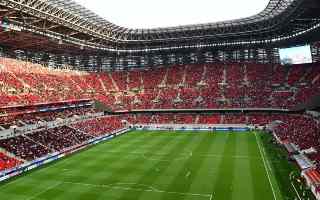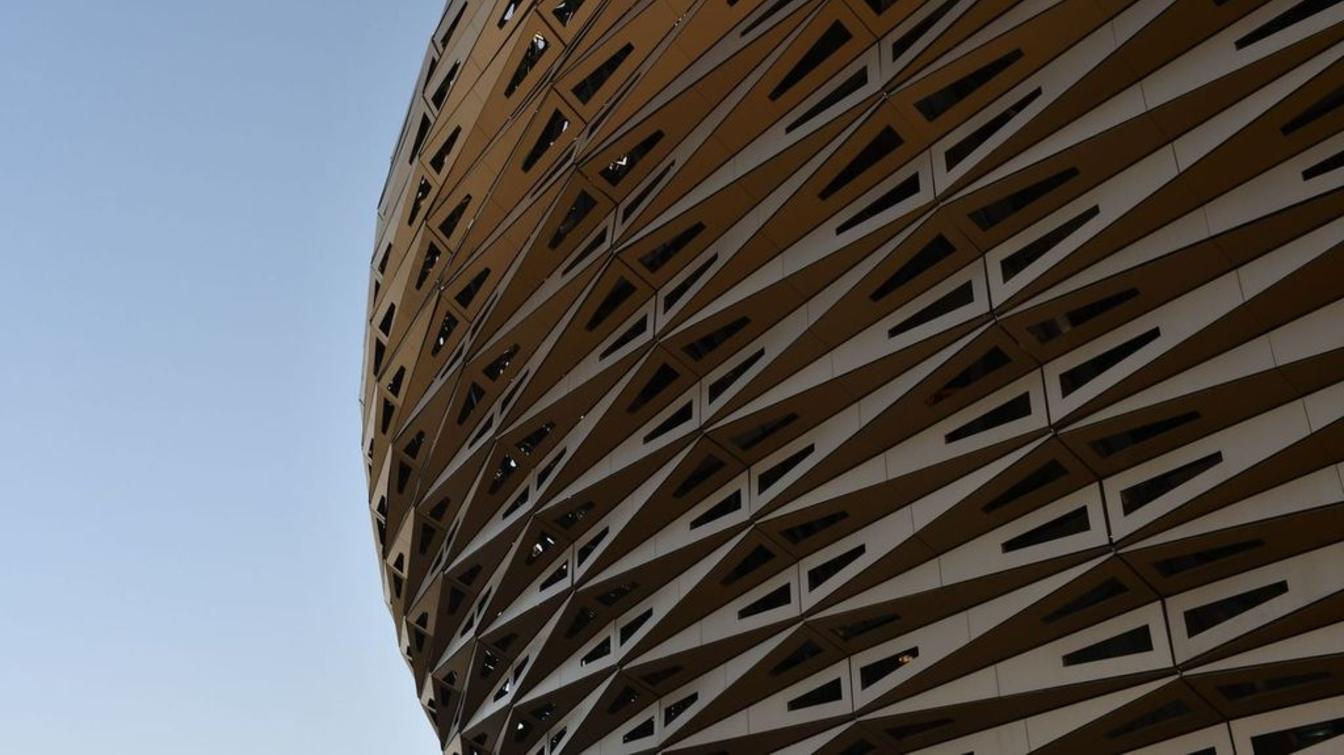Morocco: Massive Moroccan World Cup stadium opened!
source: StadiumDB.com; author: Paulina Skóra
 On September 5 at 9:00 p.m., the players led by Walid Regragui played their first official match at the new Moulay Abdellah Stadium in Rabat. The 69,000-seat venue will host the 2025 Africa Cup of Nations (AFCON) and the 2030 FIFA World Cup. It is already being hailed as “the new face of Moroccan football.”
On September 5 at 9:00 p.m., the players led by Walid Regragui played their first official match at the new Moulay Abdellah Stadium in Rabat. The 69,000-seat venue will host the 2025 Africa Cup of Nations (AFCON) and the 2030 FIFA World Cup. It is already being hailed as “the new face of Moroccan football.”
Advertisement
Architecture and location – a new icon of Rabat
Located 7 km from downtown Rabat, the stadium stands out against the surrounding residential area. It is designed to be a showcase for the Kingdom and to confirm Morocco’s ambition to become one of the global centres of football.
The Moroccan federation opened the gates at 4 p.m. Thousands of fans had waited for hours to take part in this national event. All 69,000 tickets sold out in just a few hours, confirming the enormous interest. The stadium will host the opening match and the final of AFCON 2025.
During the inauguration, two giant screens showed a multimedia montage recalling Morocco’s journey since the World Cup in Qatar. Spectators enjoyed a spectacular light show, while supporters prepared two huge tifos. The red stands and dense atmosphere heightened the emotions of the evening. The Moroccan national team also delivered, confidently defeating Niger 5–0.
Modern VIP facilities and a record-breaking press tribune
Moulay Abdellah Stadium was designed to meet the highest FIFA standards. It offers 110 boxes, 5 hospitality lounges and more than 5,400 seats for invited VIPs. The press tribune has 1,800 seats, ensuring comfortable media coverage of AFCON 2025 and the 2030 World Cup. By capacity it is the second largest stadium in Morocco. It already meets FIFA requirements – crucial for World Cup organisation, since not all AFCON arenas meet international standards. In the coming years other stadiums in the country will be upgraded to comply with FIFA rules ahead of 2030.
 © Reda Benkhadra (Wikimedia Commons) (CC BY-SA 4.0)
© Reda Benkhadra (Wikimedia Commons) (CC BY-SA 4.0)
The heart of the stadium: four locker rooms and hybrid turf
The interior, especially the locker-room area, is decorated in Morocco’s national colours. Photos from the Qatar World Cup hang on the walls, underlining the country’s sporting ambitions. The stadium has four modern locker rooms ready for teams and FIFA officials. For the first time in Africa, a hybrid pitch with an LED growth-support system has been installed – a technological solution set to be introduced at other venues before the 2030 World Cup.
First tests and shortcomings
Journalists at the inauguration praised the venue’s modernity but also pointed to areas needing improvement. Even at the entrance there were signs of unfinished work – paint residue on stairs to the press tribune, poorly fitted metal plates in corridors and sloppy finishing details. In the press zone, connectivity was a problem: weak 4G coverage and unreliable Wi-Fi forced reporters to move to hospitality lounges, hampering live reporting.
On social media, photos appeared of so-called seat kills
– seats with restricted views. Tickets for these were sold at full price instead of being withdrawn or discounted. Fans also complained about catering: long queues caused by too few vendors, high prices (e.g. 15 dirhams (around £1.20) for a small 330 ml bottle of water) and a lack of clearly displayed price lists at stands.
Managing the flow of people with such a large crowd proved challenging. Only two entry and exit points – Hay Riad and Hay El Fath – were in use, leading to chaos and long queues. Although footbridges and underpasses were provided, they were insufficient. Not all spectators respected assigned seats. Despite federation appeals, some ticket holders found their places already occupied, leading to disputes and, in some cases, having to watch the match standing or sitting on the stairs.
 © Reda Benkhadra (Wikimedia Commons) (CC BY-SA 4.0)
© Reda Benkhadra (Wikimedia Commons) (CC BY-SA 4.0)
Advertisement

 StadiumDB
StadiumDB